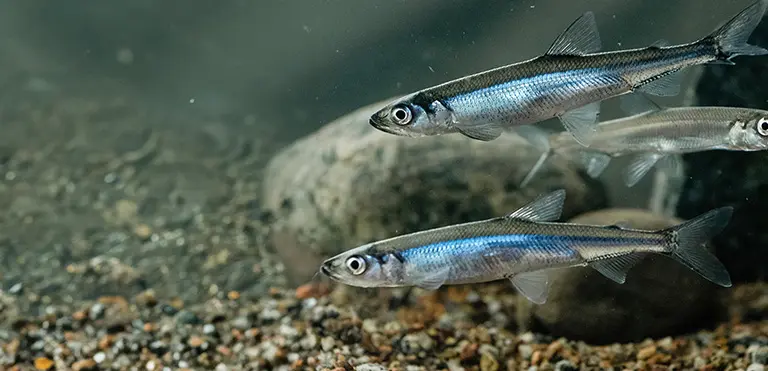European smelt, also known as sparling, are an anadromous, midwater fish species, predominately found in estuaries of the UK. It was one of the earliest fish species to receive a legal protection status in the UK due to intensive overfishing during the 17th century. Unfortunately, population decline continued to occur over the following centuries and to date, the species remains scare in the UK. The species was historically known is around 76 locations across the British Isles including the River Thames which was believed to have one of the largest populations in the UK.
Key threats to the species include pollution of water systems and migratory barriers which block access to suitable spawning habitats. There is ongoing work to access the suitability of several water systems in the UK for repopulation with European smelt (Solway Firth, River Wyre). Outside the British Isles, the species is distributed around northern shorelines of Europe including the White Sea southward to the western coasts of France, the Baltic Sea, and the southern North Sea. Landlocked populations exist in larger freshwater lakes in Europe.
Smelt are a coastal and brackish water inhabitant and is rarely found far from shore. Individuals form shoals during spawning season in estuarine zone with short trips to littoral zone before migrating into freshwater systems for spawning. Spawning season in the UK generally occurs between February and April depending on the water temperature. Shoals ascend river and stream systems under the cover of darkness using the spring high tides. Due to their weak swimming ability, smelt migration can be hindered by powerful river flows and this often means locations for spawning vary year on year. Fast-flowing, shallow sections of rivers are favoured for spawning especially regions with gravelly and pebbly substrate, tributaries of lakes or shallow lake shores. Smelt spawn on mass; each female releases 10’s of thousands of eggs during the spawning period. Eggs attach to substrate and develop at a rate determined by water temperatures. Juveniles mature in estuarine systems, feeding on zooplankton and can reach maturity within two years. Limited knowledge exists around the requirements of adult smelt. Their diet expands from zooplankton to include planktonic crustaceans and smaller fish species including herring and gobies.


![Enquire about [page_name /]](https://www.surescreenscientifics.com/wp-content/uploads/2024/12/Great-crested-newt-eDNA-sample-collection-guidance_620x180-4.jpg)